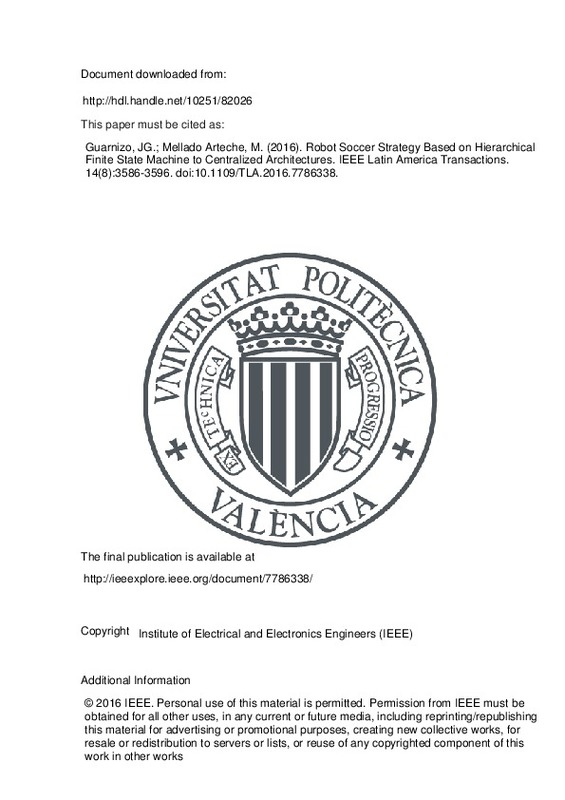JavaScript is disabled for your browser. Some features of this site may not work without it.
Buscar en RiuNet
Listar
Mi cuenta
Estadísticas
Ayuda RiuNet
Admin. UPV
Robot Soccer Strategy Based on Hierarchical Finite State Machine to Centralized Architectures
Mostrar el registro completo del ítem
Guarnizo, JG.; Mellado Arteche, M. (2016). Robot Soccer Strategy Based on Hierarchical Finite State Machine to Centralized Architectures. IEEE Latin America Transactions. 14(8):3586-3596. doi:10.1109/TLA.2016.7786338
Por favor, use este identificador para citar o enlazar este ítem: http://hdl.handle.net/10251/82026
Ficheros en el ítem
Metadatos del ítem
| Título: | Robot Soccer Strategy Based on Hierarchical Finite State Machine to Centralized Architectures | |
| Autor: | Guarnizo, J. G | |
| Entidad UPV: |
|
|
| Fecha difusión: |
|
|
| Resumen: |
[EN] Coordination among the robots allows a robot soccer team to perform better through coordinated behaviors. This requires that team strategy is designed in line with the conditions of the game. This paper presents the ...[+]
|
|
| Palabras clave: |
|
|
| Derechos de uso: | Reserva de todos los derechos | |
| Fuente: |
|
|
| DOI: |
|
|
| Editorial: |
|
|
| Versión del editor: | http://ieeexplore.ieee.org/document/7786338/ | |
| Descripción: |
|
|
| Agradecimientos: |
|
|
| Tipo: |
|







![[Cerrado]](/themes/UPV/images/candado.png)


